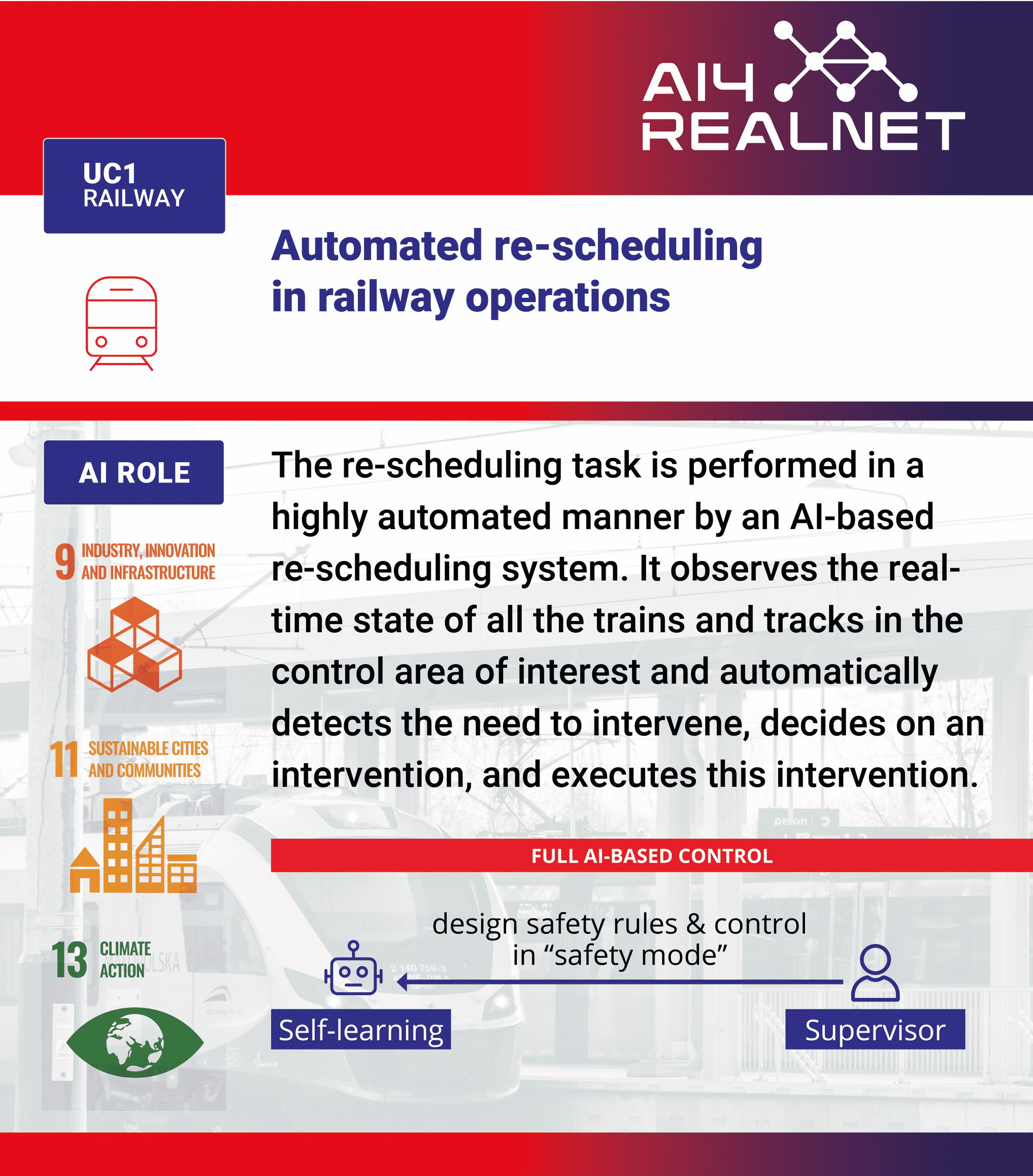Railway Network Use Case 1
Automated re-scheduling in railway operations
Context and motivation: Growing environmental awareness and changing policies for mobility will lead to considerably more demand from railway network capacity, denser traffic and further need for efficiency and resilience of railway traffic management. Novel dispatching technologies or huge infrastructure investments are inevitable to maintain or improve the current quality of services. AI-based support systems can be developed to enhance dispatchers’ capabilities, aiming to automate some of today’s decision-making processes and provide support and input for human decision-making in complex operating scenarios.
Problem formulation: Unexpected events, such as infrastructure malfunctions or delays, can occur in railway operations. In this case, the automated system must re-calculate the schedule so the requested services can be fulfilled with as little delay as possible. Adapting the schedule includes interventions, such as changing the speed curves of trains, changing the order of trains at the infrastructure element, changing the routes of trains, or changing the platform of a commercial stop in a station. An automated AI-based system is designed to manage and optimise railway schedules in real-time, ensuring efficient rail network use while minimising passenger delays. The system is constantly monitored by a human operator who can adjust the system’s configuration and identify the need for adaptation and re-training.
Stakeholders: Railway network operators, network supervisors, railway undertaking operation managers, passengers, government, and society.
Threats and vulnerabilities: Accountability, who is responsible for delays and, in general, bad performance of the AI system. While the immediate danger of train collision is addressed by separate systems that the AI system will not control, there is a risk of severe traffic congestion.
Key benefits: Improve punctuality of trains; increase the speed in response to disruptions or changes; better use of the available capacity in the railway network.
Download the Use Case file to see the complete description!
